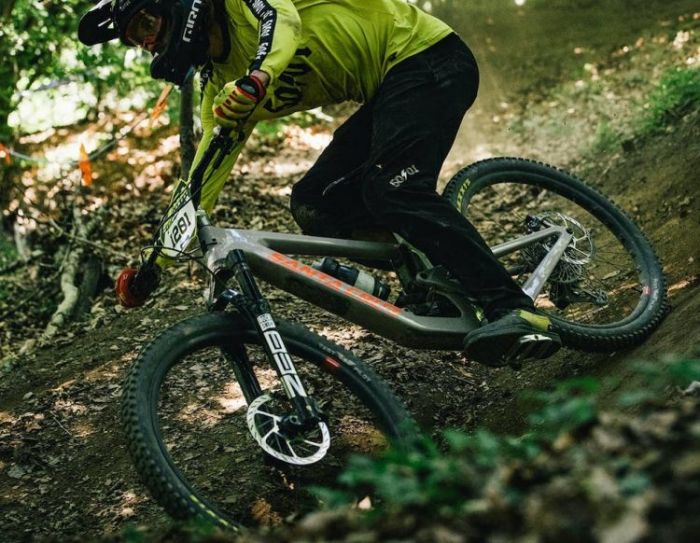Trek Stache 5
- Price: 1,679 USD
- Travel: 120mm (front)
- Wheels: 29″
- Drivetrain: 1×10
What we like about it: Trek Stache 5, the cost-effective hardtail forest-road bike with 29″ that delivers great traction and crushing power.
What don’t we like about it: Facing a difficult technical descent requires a high level of control.
Rating(4.7/5)
Introduction
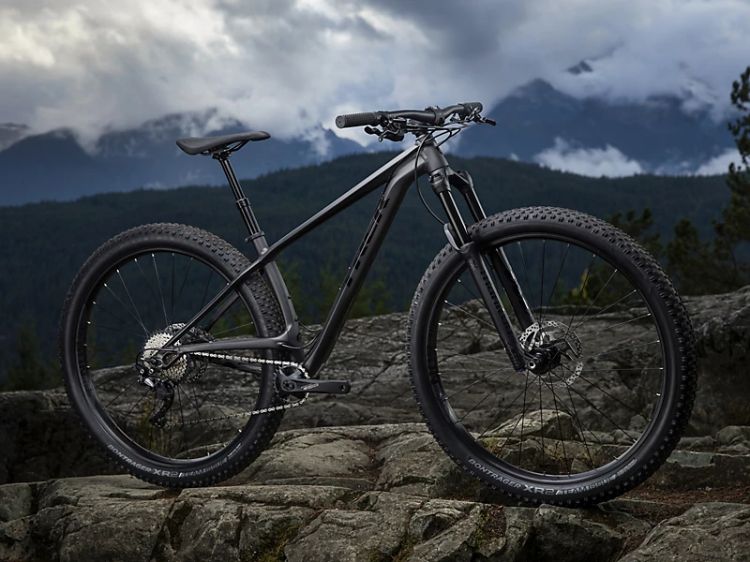
Built around simplicity, reliability and fun, the 2018 Trek Stache 5, combined with the efficiency of a hardtail, takes you through the woods in a hurry and can effectively reduce the hindrance of bumps. At the same time, the reduced rear guts and turning points give you absolute pedaling efficiency compared to the full-suspension model.
The lighter frame geometry of the aluminum material is capable of reducing the incidence of failure. If what you need isn’t an expensive full shock model and you’re not dealing with more specialized terrain, then you’ve got what you need with a superbly priced Trek Stache 5. Whether you want a steep downhill to give you a strong confidence boost or are on a tough uphill section.
For a rider with little experience who wants to start an outdoor adventure, there is no need to struggle with the choice of model. With a lighter shape, faster acceleration riding and fewer tricks, the Trek Stache saves your mind and effort.
Learn More: Trek Stache 7 Reviews- A Big-Wheeled Hardtail Forest-Road Bike
Descending
For the vast majority of hardtails, unknown wild forest roads are very unfriendly. Compared to the full-suspension model, the reduced bumps from the rear shock mean you have to be very focused on control. But the Trek Stache 5 still gave me a great surprise. I took this excellent student on a forest road ride during the weekend. Although this seemed a bit gentle compared to many of the more professional forest trails, the Trek Stache 5 was still under a lot of pressure when faced with the rooty, rocky descents. I’ll explain why I give the Trek Stache 5 high marks on each of the following points.
In terms of material, the alpha platinum aluminum frame is more suitable for novices to hone in the field than the vast majority of the popular carbon bodies while bringing an efficient ride weight of 29.5 lbs. Although it will be more sedate compared to carbon, the alloy frame is less costly, more wallet-friendly, and resistant to UV rays as well as more robust to impact.
The 29×3.0˝ vacuum tires were able to simply ignore some of the obvious bumps and potholes I faced while traversing the forest road. I have to say that the Trek Stache 5 performed like a truck, crushing with complete ease.
Experience
At the same time, I have to suggest that a large part of my source of confidence when descending quickly also comes from the swift Tektro M285 liquid disc brakes. I am a very cautious rider and double-check the brakes before every ride. And I am sure there will be a good percentage of riders who will be like me. When faced with a sharp descent, you can’t anticipate the next oncoming trees and blocks from rougher boulders, or even the impact of flying bags.
I think the Trek Stache 5 has an advantage on descending terrain. Although the lack of rear gut pressure compared to some full-suspension models can cause the rider to constantly squeeze the rear end. If you’re a rider who loves to move fast this repeated riding habit can limit your speed through forest roads.
Climbing
I don’t think I need to go into too much detail about the performance of the Trek Stache 5 model on climbs. The hardtail is already good at climbing and with no rear shock, you don’t need to worry about a letdown. If you are a novice and have little time to choose and analyze comparisons, and also like the toughness of acceleration and the physical exercise. I think Trek Stache 5 can satisfy you very well.
When I started my upward climb, even though I thought from the beginning that the 29×3.00˝ vacuum tires would be a big help to me. I was shocked to see it running efficiently, and forgive me for such a rich change of emotions. I was riding on 27.5˝ or even smaller tires during all this time. Although it has to be said that the smaller tires have more flexible steering ability compared to the larger tires.
Of course, I must admit that on rough and bumpy roads, I couldn’t complete this test without an effective damping fork. And the efficient working 120mm damping fork helped me filter out a lot of vibrations, increasing the forgiveness rate and reducing the probability of rollover.
Experience
However, I will give you some dings. If you are facing more climbing sections, experienced riders will need to lift the seat tube as well as a bigger cassette to help you pedal. That’s why I’ll mention the Trek Stache 5 drivetrain next.
The Shimano HG50 1×10 drivetrain gave great encouragement for upward climbing. Without such easy and efficient shifting, I would not have been able to preserve the upward momentum by continuously shifting gears during the spin-up without losing the necessary travel. I think this gives you the necessary support in preserving your strength as well.
In summary, I believe that no matter what the terrain is, only a good combination of all the components of the vehicle can work together to give the best performance.
Main Features
Frame
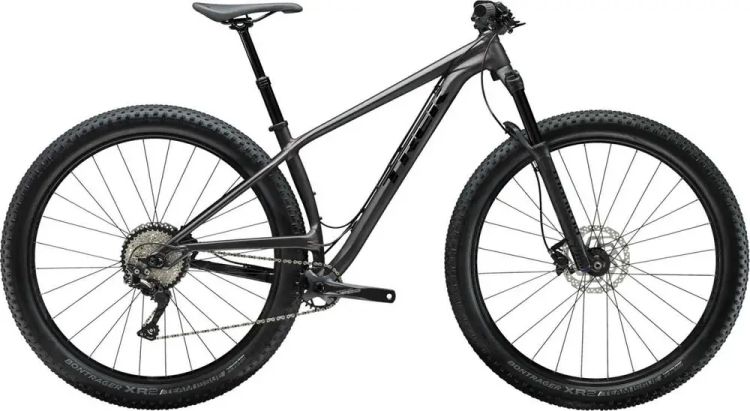
For the hardtail forest road, the geometry will be more lively. While the use of alpha platinum aluminum material, the alloy’s strong frame strength can have a high degree of passing performance when you cross the forest road. Compared to the more popular carbon material, the alloy is more adaptable to the rough environment, and lower maintenance costs.
In the color, I am more feel a little regret, not more bright colors. Compared to the 2016 Trek Stache 5 has more bright green. Although the manufacturers’ understanding, the 2019 Trek Stache 5 black is more subdued and more conservative.
In my opinion, the 2019 Trek Stache 5 is a tough style. So I think it has a longer handlebar cross, which is just the right length for me with broad shoulders. But if the shoulder width is narrower, it may have some impact on the concentration of your ride.
It is still a simple design with internal wiring. During the ride, the internal wiring reduces the possibility of a short circuit in the face of a cut that can easily occur on forest roads, and at the same time. If you are rushing through a forest after a rain, the key wiring will not be yanked around, while reducing the burden for subsequent care.
Geometry
For the forest-road hardtail model, the longer wheelbase(102mm), the more aggressive head tube angle(67.8°) provides a more aggressive ride. And it gives you more enjoyable speed descending excitement. I never thought anyone would turn down a more exciting forest-road descent. After we climbed so hard to the peak isn’t it just waiting for this moment? And for the 2019 Trek Stache 5, also comes with a surprisingly short rear dropout fork. So we’re in complete control of this high-speed machine.
In addition, the 67.8° seat tube angle doesn’t make the riding position too difficult, you can ride close to upright without putting a muscle burden on long rides. Of course, if you’ve been riding a road bike for quite some time, you’ll have complaints about the 2019 Trek Stache 5’s relatively short front reach(430mm) and top tube length(636mm), which will give you a feeling of constriction. But in my opinion, these two figures are not very abrupt for a mountain hardtail.
Components and Specifications
Trek Stache 5 Front Fork
While I thought the Trek Stache’s sturdy bodywork has taken a lot of the hassle out of outdoor challenges. But combined with the Manitou Machete 32 Comp’s beefy fork, and moderate or even longer 120mm of travel, I still had greater body control when driving over exposed roots and larger rocks.
The constantly working shock fork absorbs a lot of the squeeze from the outside environment. This saves you a lot of energy if you need to go through a long journey. But the only thing that’s a bit unfortunate is that there is no locking feature, so you can’t accelerate any further on smooth roads.
Trek Stache 5 Tires
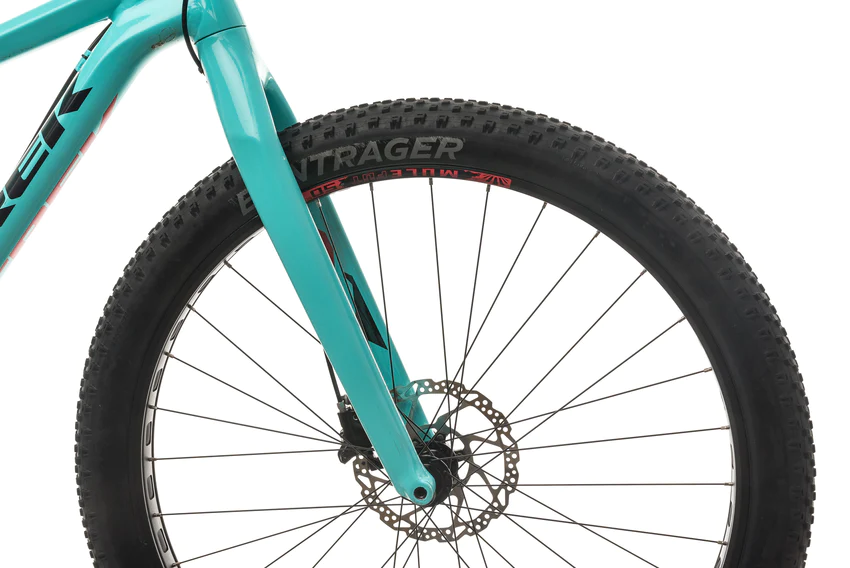
With the support of the 29×3.00˝ vacuum tires, it took me relatively little effort to reach the apex, something the smaller tires could not give. And the wide, tread-covered tires combined with a solid wheelset to work with in crushing some flat potholes on the path without having to dodge or duck in the face of small potholes and small protrusions. It gave me a very big boost on the rock-strewn forest roads.
And, if you’ve ridden with 27.5er or smaller wheels, you’ll feel that the taller tires are also absorbent to ground vibrations. So I think the Trek Stache components are very high on fit.
Trek Stache 5 Hydraulic Disc
I have to acknowledge the very sensitive brakes used by the Trek Stache 5. I can’t fault them for the ease of speed control and timely braking. The Shimano MT200 hydraulic disc was a great help when I was facing some unexpected tree trunks on the ground or trying to get out of some corners that I wasn’t very confident about by steering with the front wheel. I believe that if I want to explore an unknown journey, a brake that always works efficiently is essential.
Trek Stache 5 Shimano Deore M6000 1×10 Drivetrain
Just as I rarely praise the speed of a hardtail, I rarely mention the drivetrain. I mean: Isn’t it natural for a hardtail to be in pursuit of speed? Trek Stache’s Shimano 1×10 drivetrain is still impressive enough to impress me.
Since I had often ridden higher spec 1×12 shifted mountain bikes before, I started as a moderate 1×10 drivetrain overly abbreviated. Although I did understand that this would have some impact on weight reduction. I was even mentally prepared for no way to make it as I made the uphill climb. But really when faced with the difficulty of the ride, I adjusted the speed to maximum. It was very easy to do compared to the 2x shifting. Throughout the acceleration, the Trek Stache was decisive in breaking the uphill resistance and giving a lot of confidence on the rough roads.
Other Versions Of Trek Stache 5
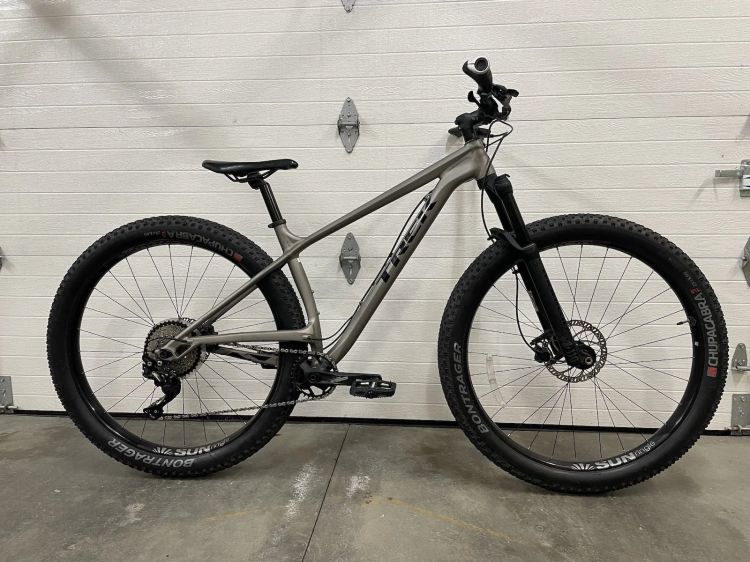
If we do a side-by-side comparison of the Trek Stache 5 for the last three years. We will see that there is no complete upgrade in the key components. The choice of tires is still the most classic Bontrager series 29×3.00″ vacuum tires, which are uniformly strong in terms of crushing force for smaller obstacles. For the 2017 brake selection, the Tektro M285 hydraulic disc was used as opposed to the 2019 and 2018 versions. Brand preference for these two may influence your decision-making.
Secondly, in terms of power drivetrain, it maintains a solid 1×10 single-disc drivetrain and does not make some aggressive 2x or even 3x drivetrain. Although this would be more friendly for more rugged mountain environments. From the side, it reflects the consistent positioning of Trek Stache 5.
Among the key geometry data, I should point out that the 2017 Trek Stache 5 has a more aggressive 68.4° head tube angle, which means it is more difficult to climb. So the two subsequent versions (2018/2019 Trek Stache 5) have been lowered accordingly to be more uphill friendly.
What we like about it?
- A cost-effective hardtail model with a high-quality aluminum alloy frame can be well adapted to the rough environment in the field.
- More classic 29″ wheels, able to toughly crush obstacles that do not need to dodge.
- Longer travel fork to reduce the impact of bumps.
- 1×10-speed drivetrain gives enough power to support when climbing upwards.
- Shimano-grade liquid discs are more sensitive and easier to maintain for braking.
What don’t we like about it?
- Limited color range, can not meet the people who love beautiful colors.
- Need to plan when dealing with more complex mountainous terrain.
FAQ
- What is the weight of the Trek Stache 5?
The weight of Trek Stache 5 is 29.5 lbs.
- What is the Trek Stache 5 fork travel?
Trek Stache 5 fork travel is 120mm.
- What is the Trek Stache 5 drivetrain?
The Trek Stache 5 drivetrain is a Shimano Deore M6000 1×10 speed.
- What is the size of Trek Stache 5 tires?
Trek Stache 5 tire size is 29×3.00˝.
Comparison Table
| Bicycles | Price | Gear | Brakes | Tires | Click view |
| Trek Roscoe 7 | $1899 | 1×12 | Shimano MT200 hydraulic disc | 29×2.60” | Click view |
| Santa Cruz Chameleon D / Aluminum / 29 | $2149 | 1×12 | SRAM Level | 29×2.3″ | Click view |
| Diamondback Sync’r | $1500 | 1×12 | Shimano MT-500 | 27.5×2.8″ | Click view |
| Salsa Rangefinder Deore 12 29 | $1699 | 1×12 | Shimano MT200 | 29×3.00˝ | Click view |
Trek Roscoe 7 vs Trek Stache 5
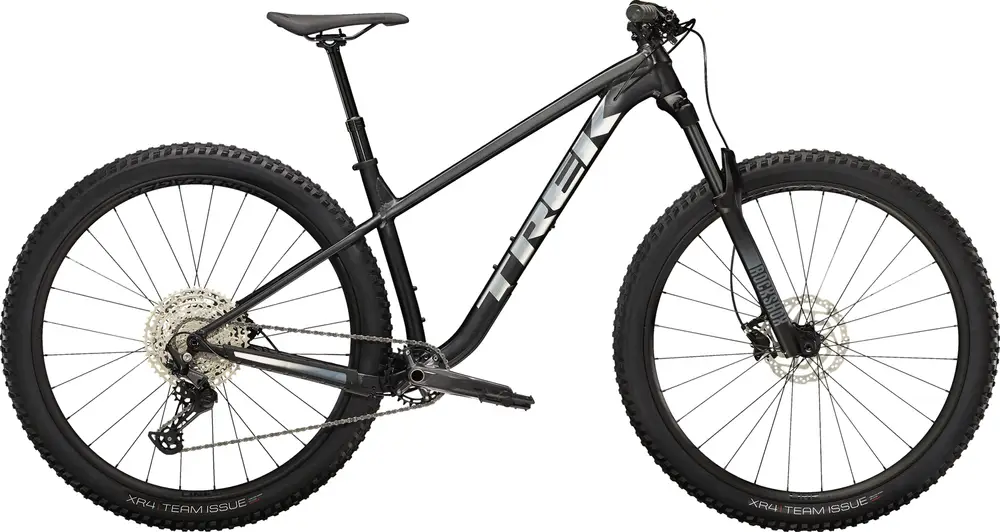
For the Trek Roscoe 7, which is at the same price level, my assessment of him is moderate. Despite the 1×12 upgrade in the drivetrain and therefore greater speed options, it also reflects improved performance on the climbs.
But against the 30.8 lbs of the weight of the Trek Roscoe 7, I think there will still be some pressure on the ride. In contrast, the lighter weight of the Trek Stache 5 will make it easier to accelerate and easier to ascend or climb.
In terms of effective fork travel, the Trek Roscoe 7 has 130mm of longer travel, which makes it more efficient at handling some bumps and will be more rider-friendly on longer, bumpier rides. However, in terms of tire size, the Trek Roscoe 7 has chosen a narrower 29×2.60” tire. It helps reduce drag, although the wider tire has more crushing force on longer rides.
At the same time, the Trek Roscoe 7 comes in a wider variety of colors, while the Trek Stache 5 will be more homogeneous and not appeal to the crowd at first glance. So to sum up, if you are a person who likes to ride longer distances, has moderate speed requirements, and likes more stable handling, I would have to recommend the Trek Stache 5.
Learn More: Is Trek Roscoe 7 Worth Buying? [Trek Roscoe 7 Review]
Santa Cruz Chameleon D / Aluminum / 29 vs Trek Stache 5
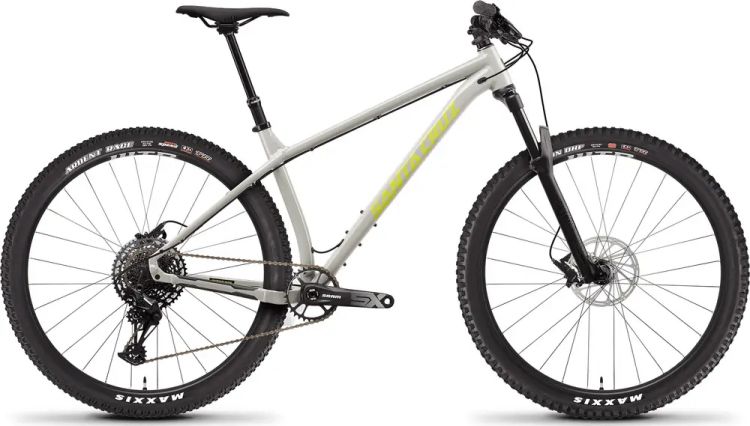
The Santa Cruz Chameleon, with its narrower 29 “x2.3” tires, has an advantage in terms of speed. But it also means that it will be more passive in the face of small obstacles in the woods and will not be as tough as the Trek Stache 5.
Meanwhile, on the drivetrain, Santa Cruz Chameleon has opted for a more high-end 1×12 drivetrain. It means it will have a wider range of options in the face of some rising terrain that requires cranking up the gears.
The two are nearly identical in terms of fork travel, so the energy absorbed in the face of riding bumps is close. Although I prefer the more robust Trek Stache 5 to handle the aggressiveness of the outdoors.
learn more:Santa Cruz CHAMELEON Review-Just A Climbing Lord?
Diamondback Sync’r vs Trek Stache 5
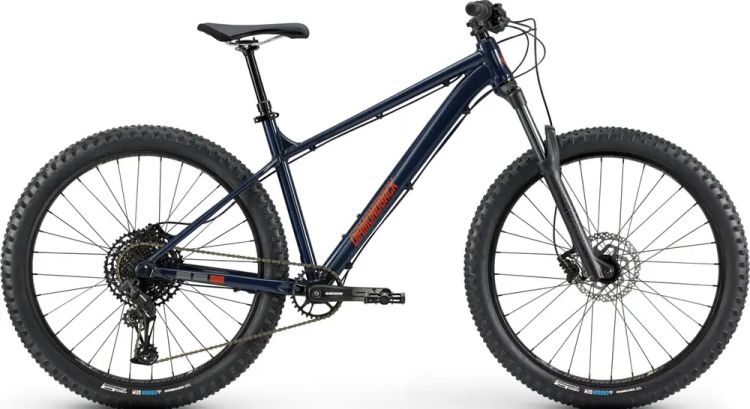
The distinctive feature of the Diamondback Sync’r is its choice of more efficient rolling 27.5×2.8″ size tires. It is a step up in agility, albeit a little less in crushing power. And secondly, a higher component 1×12 drivetrain for the conventional system of power. This means that in some starting acceleration performance is better than the Trek Stache 5 1×10 drivetrain.
In the face of the same take more adaptable to the outdoor aluminum alloy, the two in the weight can not pull the distance. And for the brake ecology, the same takes a more sensitive liquid disc brakes.
In summary, I think it’s almost a tie between the two. But if you like to traverse higher elevation trails, maybe the 29″ Trek Stache 5 would be better for you.
Learn more : Is Diamondback Syncr Worth Buying? [Diamondback Syncr Review]
Salsa Rangefinder Deore 12 29 vs Trek Stache 5
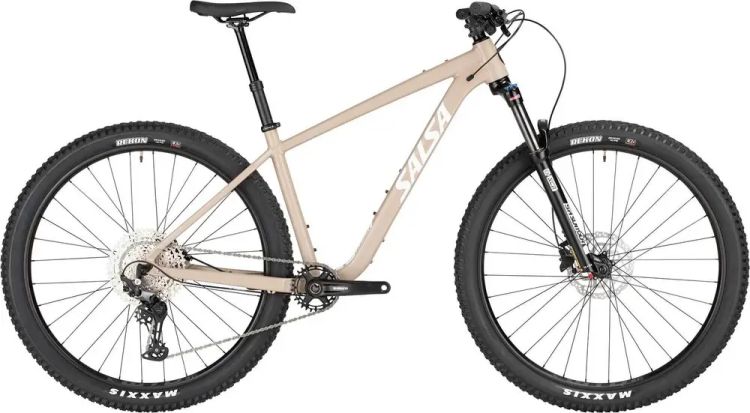
The Salsa Rangefinder Deore has a more sedate weight of 32.3lbs. And it will feel stronger on the ground during the ride. This is a step up from the 1×10 Trek Stache 5. In terms of the braking systems, both use more sensitive liquid disc brakes.
For the ride with different tires, the Salsa Rangefinder Deore has narrower 29 x 2.6″ tires. So it will be more friendly to air resistance and will improve the speed faster. Although it also faces the problem of lack of lapping pressure with narrower tires.
If you ride flatter roads all year round, then the Salsa Rangefinder Deore will be more suitable. If you face more variable terrain and bumps, then the Trek Stache 5 with wide tires and a good speed boost is your essential choice.
In case, the above comments are helpful to you, please remember to share the subscription. Have a great day!

![[Orbea URRUN 10 20mph Review] – Best Used By People Who Enjoy Riding To Get AFeel For The Mountains!](https://bestbikeselect.com/wp-content/uploads/2023/09/2023-Orbea-URRUN-10-20mph-35_-1024x1024.jpg)
![[Specialized Turbo Como 5.0 Review] – Good Choice?](https://bestbikeselect.com/wp-content/uploads/2023/08/2023-Specialized-Turbo-Como-5.01_-1024x1024.webp)
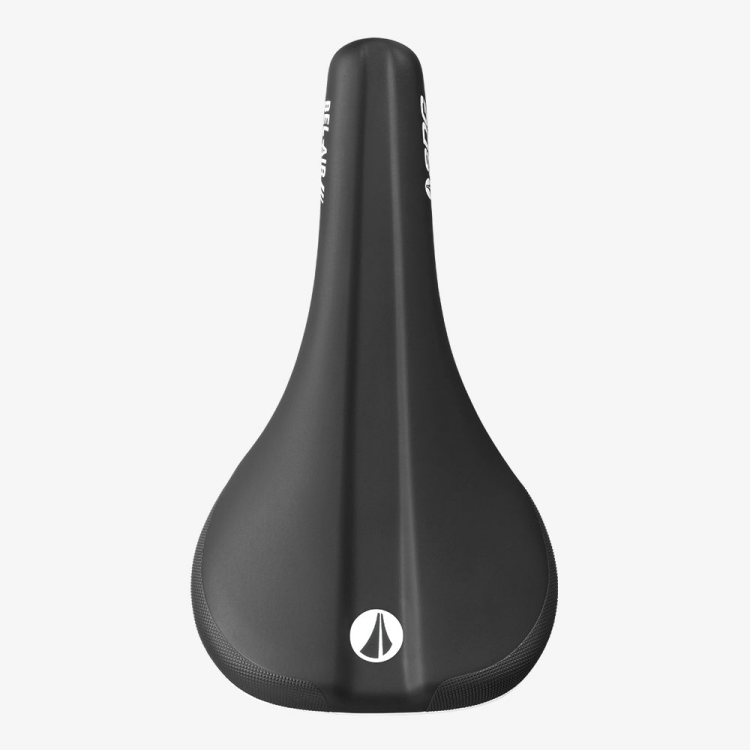
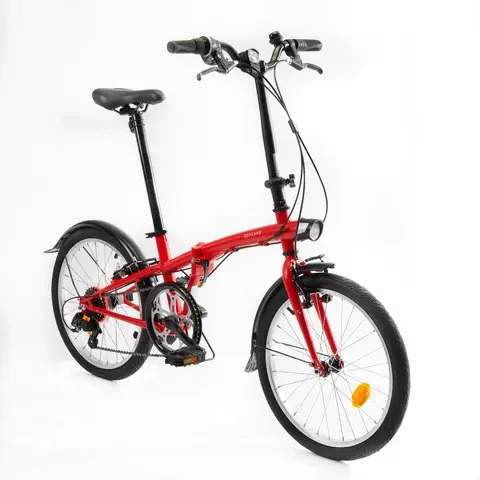
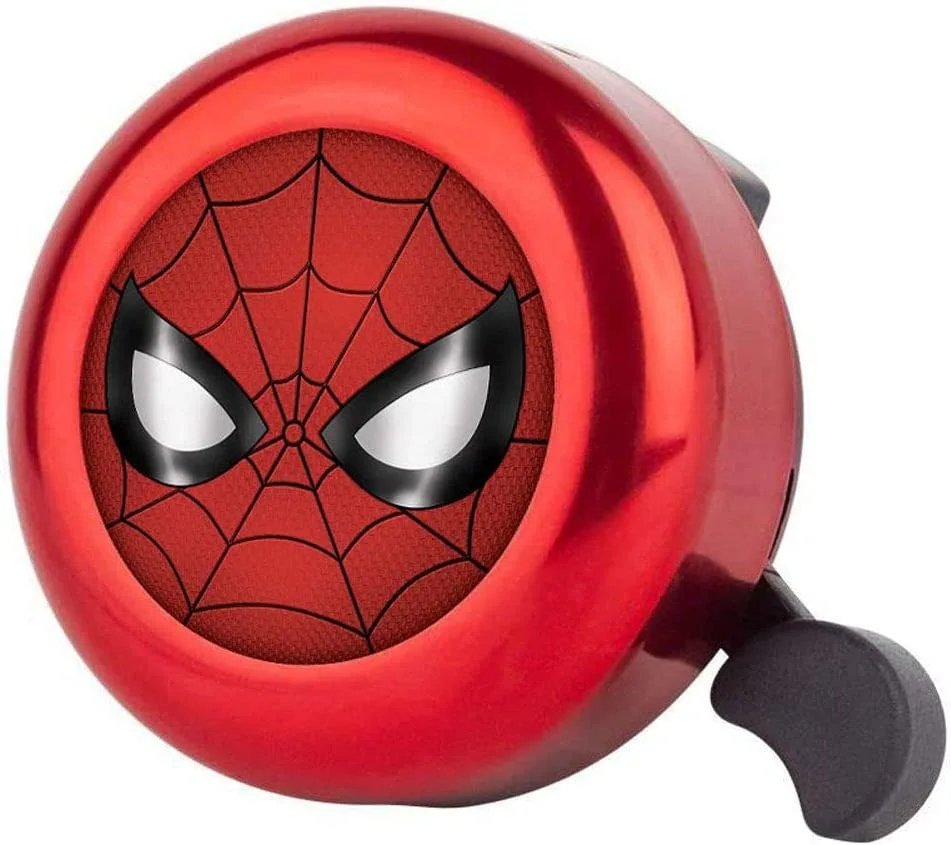
![2025 Built for Champions:[Orbea ORCA M21eTEAM PWR Review]](https://bestbikeselect.com/wp-content/uploads/2025/01/ORCA-M21eTEAM-PWR-1024x885.jpg)
![2025 Conquer Any Trail [Santa Cruz Bronson R Review]](https://bestbikeselect.com/wp-content/uploads/2025/01/Santa-Cruz-Bronson-R-1-1024x768.webp)
![2025 The All-Terrain Beast [Santa Cruz Hightower 3 MY24 Review]](https://bestbikeselect.com/wp-content/uploads/2025/01/Santa-Cruz-Hightower-3-MY24-1024x768.webp)
![The Best Comfortable Leisure Bike of 2025 [ Trek Verve 2 Lowstep Gen 5 ]](https://bestbikeselect.com/wp-content/uploads/2024/12/Verve-2-Lowstep-Gen-5-02-1024x681.png)
![2025’s Top Endurance Bikes [Cannondale Synapse Carbon 3 L Review]](https://bestbikeselect.com/wp-content/uploads/2025/01/Cannondale-Synapse-Carbon-3-L-1-1024x627.webp)
